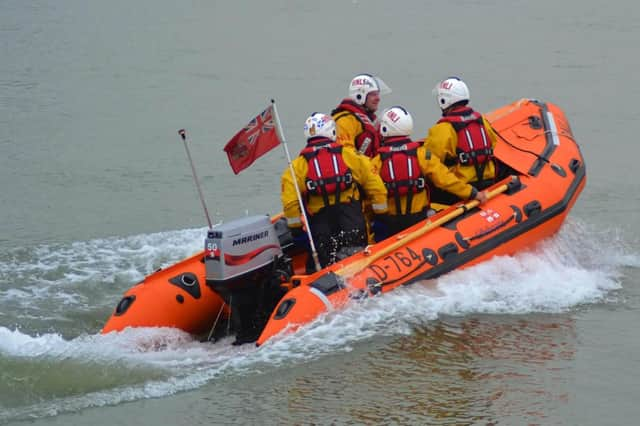Montrose lifeboat station marks inshore lifeboat's 60 years of saving lives


Introduced in 1963, the inshore lifeboat continues to be an invaluable asset in the Royal National Lifeboat Institution’s (RNLI) fleet, as new figures show that the vessels ha have saved 30,778 lives across their six decades.
The inshore lifeboat has enabled the charity’s volunteer crews to carry out their lifesaving work closer to shore, in areas inaccessible to other lifeboats in the fleet.
Advertisement
Hide AdAdvertisement
Hide AdDesigned to be quick and manoeuvrable, inshore lifeboats usually operate closer to shore than the all-weather lifeboats and can work in shallower water, near cliffs and among rocks and even inside caves meaning crews can get as close as possible to those in trouble.
With a top speed of 25 knots, they can endure three hours at sea at this speed on search and rescue missions, and come equipped with night vision equipment, a searchlight and parachute illuminating flares to light up the surrounding area, helping to keep crew members safe as well as locate those in need of help. It also carries medical equipment including oxygen and full resuscitation kit.
Montrose’s D Class lifeboat Nigel A Kennedy has been saving lives at sea since 2014 when it arrived at the station.
Derek Smart, Volunteer Lifeboat Operations Manager at Montrose, said: "RNLI Montrose’s inshore lifeboat Nigel A Kennedy has enabled our volunteer crew to reach areas close to shore, cliffs and rocks to rescue people in trouble.
Advertisement
Hide AdAdvertisement
Hide Ad"These fast and highly manoeuvrable lifesaving craft answered the need for a quicker and more agile response to rescues in areas of water that were more challenging to the larger and slower all-weather lifeboats.
“Our inshore lifeboat is a part of our community and suits the demands of the rescues we attend making, with its unique features and capabilities has made a huge difference to the efficiency and effectiveness of our 24/7 search and rescue service.
“Nigel A Kennedy has aided many people in difficult situations, whether that’s people being cut off by the tide, boats in trouble or water users in need of our help.”